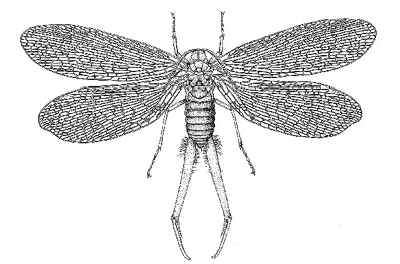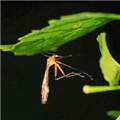
Order
MECOPTERA(Greek, meco = long; pteron = wing)
Common Names
Description
The name "scorpion fly" comes from the habit of males in one family of carrying the last few abdominal segments upcurled and resembling the tail of a scorpion. Members of this order have two pairs of narrow wings. The head is elongated into a beak or rostrum with developed mandibles at the apex. Compound eyes are large and separate. The antennae are long and composed of short, straight segments (filiform). The legs are long and spindly. Some Australian scorpion flies inhabit long grass or shrubby areas, frequently at the edges of streams and suspend themselves by the forelegs with the hind legs "dangling" freely in order to grasp prey as it flies past. Other species actively hunt caterpillars or similar prey.
Life Cycle
Courtship involves scent (pheromone) attraction of the females by the males who have a gift of a meal offering such as a captured insect. An attracted female inspects the offered meal and if it is accepted, she mates with the male while consuming it.
Development follows a metamorphic cycle of egg, larva, pupa and adult. Larvae appear grub-like and have six legs on the thorax. The larvae always have a hard (chitinised head capsule with antennae and mandibles. Larvae may have prolegs but these lack crochets.
Food
Mecopterans feed on other insects such as caterpillars.
Importance
Mecopterans play an important role as insect predators in ecosystem food chains.

